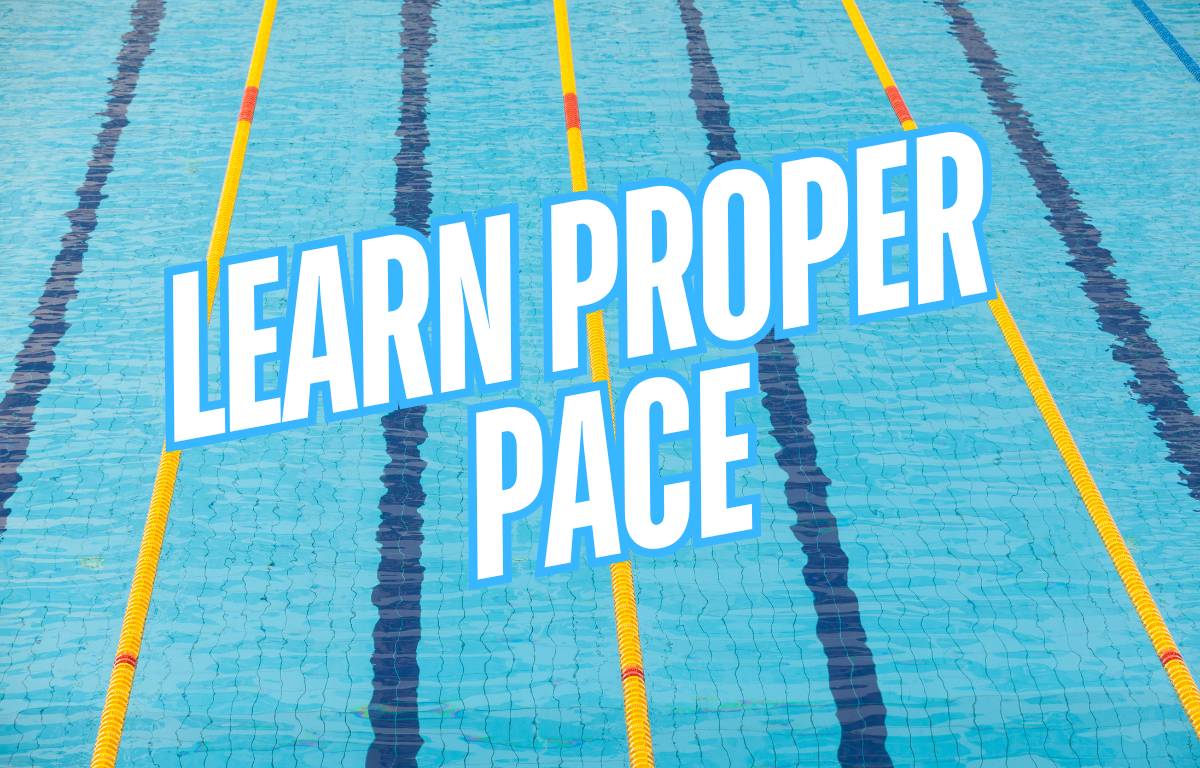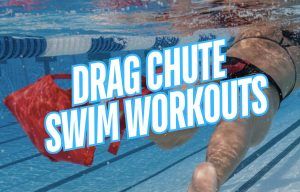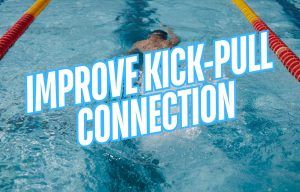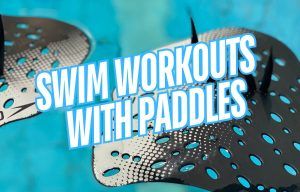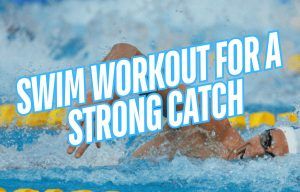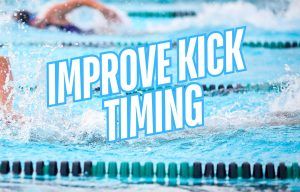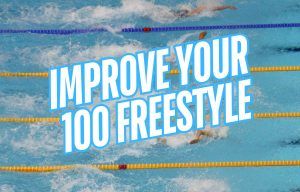Improve energy efficiency, endurance, and swimming speed with these swim workouts for learning proper pacing.
Pacing is a crucial part of swimming well and swimming fast.
While swimmers focus on building blistering speed and steadfast endurance, managing and pacing all that energy is crucial for success in the pool.
Pace sets help you find your most efficient intensity level, where you can swim fast without running (err, swimming) into a wall.
Below are some sets and workouts to help swimmers understand and master pacing in the pool.
We’ll also list some quick tips for how to best manage effort when racing so that you can drop some fast times in the water.
Let’s dive right in.
Set #1: Setting a Target Pace
Let’s start in the shallow end (metaphorically speaking) and start with the absolute basics when it comes to adding this type of swim training.
Set a target time for the set and see how many times you can hit it.
For example:
- 20×25 freestyle swim – Choose a target time (i.e. 17 seconds per repetition) and see how many of the 20 repetitions you can hit that pace.
- 20×50 freestyle swim – Choose a target time (i.e. 35 seconds per repetition) and do the same as the 25s.
The repetitions shouldn’t be at 100% effort, either.
Start with medium-effort swimming to get a sense of what speeds at different intensities feel like.
With a baseline in hand, we can start building up the volume and conditioning to really learn pace.
Set #2: Variable Pace Training
Let’s crank up the difficulty a little bit by targeting several different paces and speeds to promote a deeper understanding of how speed and energy distribution work at various intensities.
For these sets, we will use the same target goal paces (:17 per 25m and 35 seconds for the 50m repetitions).
The goal is to swim at three different speeds: slightly slower than pace (forcing you to swim “easy”), hitting the target pace, and swimming faster than pace.
Swimmers learn pacing skills by being exposed to different speeds and paces to teach the body what each velocity feels like.
This set uses a repeating descending format that swimmers of all abilities should learn and get comfortable using.
- 30×25 freestyle swim. We will do ten rounds of 3×25, with the following target times for the 25s: 18 seconds, 17 seconds, 16 seconds.
- 30×50 freestyle swim. Same format, but targeting the following times: 36 seconds, 35 seconds, and 34 seconds.
Descend sets are an excellent overall tool for swimmers, as they not only force you to be cognizant of speed and times but also mimic the energy demands of competitive events.
Set #3: Variable Distance and Pace Training
Let’s crank up the difficulty further by increasing the distance of each repetition. Stack up the volume, pushing yourself to maintain pace as the distance increases. This is a great form of conditioning and pacing work that gives you immediate feedback on your ability to maintain speed.
The target pace for this swim set is 35 seconds.
- 4×50 freestyle swim at pace (Target: 35s)
- 3×100 freestyle swim at pace (Target: 1:10)
- 2×200 freestyle swim at pace (Target: 2:20)
- 1×300 freestyle swim at pace (Target: 3:30)
With this type of set, the sky is the limit. Distance swimmers can crank out a lot of yardage with this form of workout.
To get more from this set, keep increasing the distance while holding the pace. 400s, 500, 800s, and so on.
Should you fall off, go back down the ladder.
For example, if you make it to the 300 but fall off the pace, repeat the set going “down,” starting with the 200s, then the 100s, and so on.
Try variations of this set over the days, weeks, and months ahead and keep pushing the distances.
How do you determine pace in swimming?
Swimming pace can be calculated by dividing time by distance.
Distance used to dictate pace can vary, but the most common one used is 100m (or yards).
For example:
- Swimming 1,500m in 20:00, your 100m pace is 1:20.
- Swimming 400m in 4:40, your 100m pace is 1:10.
Paces can be further split up to 25m and 50m.
- Swimming 100m in 1:00, your 25m pace is :15.
The pace distance you choose will reflect the distances you swim in the water and your swimming goals.
👉 Note: We created a customized calculator for determining race pace for swimmers using the pacing strategies of elite swimmers, including finalists from the Paris Olympics in 2024. Simply input your goal time, and the calculator will output target pace times for each segment of the race based on how champion swimmers pace the event. Check out our Race Pace Calculator here.
Does using SWOLF help swimmers improve pacing skills?
SWOLF is a metric used in swimming to calculate efficiency by combining stroke count and time elapsed of a lap. SWOLF is a great tool to assess your most efficient swimming pace.
For example, if you swim 50m in 35 seconds, and take 35 strokes, the SWOLF score is 70.
A SWOLF score can be improved by lowering the score (hence the “golf” portmanteau; a lower score is optimal) either by taking less strokes or swimming faster, but ideally, by doing both.
SWOLF is a handy tool for evaluating your swimming efficiency and helping you better manage energy and pace.
Wrapping Things Up
Learning pacing skills in the pool can help swimmers manage energy to swim faster, longer.
By training at various intensities, speeds, and intensities, you can get a better understanding of how you perform best in the water.
Training for goal race pace can also be a huge confidence-booster; knowing that you have put in the miles at your target pace in training gives you the confidence to know that you can do it on race day, too.
Add some pace sets to your swimming workouts, get a feel for how you perform best, and swim to new heights.
Happy swimming!
More Swim Workouts and Guides:
7 Types of Interval Training Workouts for Faster Swimming. Dive into the deep end of speed and endurance with seven types of interval training workouts for swimmers. Beginner or Olympian, these interval swim workouts will unlock faster swimming.
5 Best One-Hour Swim Workouts (for Every Kind of Workout). Short on time? No worries–here are some excellent one-hour swim practices for every kind of swimmer and goal.

